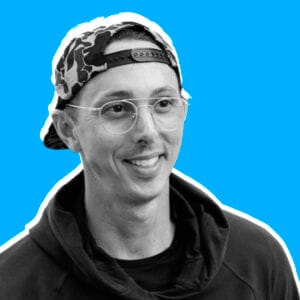Here’s how you can copy it…
What’s up Gym World?
Positioning can make or break a business, yet many gym owners don’t know what it is or how to use it.
In her book Obviously Awesome, April Dunford explains that good positioning helps prospects understand the unique value of your product and shapes their perception of it. The key is to clearly define how you’re the best at something that matters to a specific group of people.

We’ve seen strong positioning from:
- Devin Gage: Targeting people 40+ who want to get fit without pain
- Haylin Alpert: Focusing on people 55+ who hate the gym
- Lindsey VanSchoyck: Helping women struggling with hormonal changes due to perimenopause and menopause
- Melissa Shevchenko: Empowering women 40-60 obsessed with scale numbers and wanting to lose weight
- Mark Fisher: Helping people who hate gyms find a fitness home they actually love
Another great example is Cressey Sports Performance, run by Eric Cressey and Pete Dupuis. It’s known as the baseball gym for pro athletes.
💡 Get the full story on the gym and its business in Pete’s first interview with Gym World.
The market for elite players at their Massachussetts location was competitive, so they made a small tweak in their positioning—and ended up generating an extra $150k in one week.
We talked to Pete to hear how it happened:
Repositioning the gym
Cressey Sports Performance (CSP) opened in 2007 and now has two locations: Pete runs the flagship gym in Massachusetts, and Eric manages the state-of-the-art facility in Florida.

Sports performance gyms typically specialize in a specific sport:
- Exos is football
- Tiltiest Performance Institute (TPI) is golf
- TOCA Football is soccer
Two months into running the business, Eric and Pete decided to focus exclusively on baseball-specific training. No other gym was known for this, and they thought this approach would help others take them seriously and allow the business to find its footing.
Well, their strategy paid off. Nearly 20 years later, they’ve built a strong reputation in the major leagues, and every pro baseball player wants to train at their gym.
💡 Since 2020, Eric has been the Director of Player Health and Performance for the New York Yankees.
But training pro athletes is a seasonal business, and sports performance gyms often need other programs to keep the business afloat.
💡 CSP makes 20% of their revenue in June.
Though CSP was successful in offering semi-private training and strength camps, Eric and Pete added a 10-week development program that cost $4,000 in Massachusetts and $10,000 in Florida.
💡 Pro baseball players have a LOT of spending power. Eric’s gym caters to elite athletes, and he focuses on attracting the biggest names in baseball (which explains the difference in pricing).
Pete initially chased high-profile athletes, but other gyms in the same niche started offering similar services. Over time, attracting elite players became harder, and he knew he had to do something about it.
So, he looked at the results his athletes were achieving, and here’s what he found:
The athletes getting the best results were either Division 3 or community college players who hadn’t yet reached their potential. They had more room to improve their skills compared to players in Division 1, who barely progressed throughout the program.
Pete knew he could provide these athletes with high-quality training to sharpen their skills and give them a shot at reaching Division 1. So, rather than marketing to the best players, Pete narrowed his focus and began targeting 15-20-year-old Division 3 athletes.
💡 Pete connected with local coaches and colleges catering to this group, and tailored the entire program towards them.
As a result, he:
- Sold out the program in a week
- Doubled its revenue
- Pulled in an extra $150k
And ironically, by shifting his focus to those who benefit most from the program, Pete is now attracting more high-profile athletes than ever.
Go figure.
The quick & dirty positioning exercise
Gyms that are hyper-specific about who they serve perform much better than those who don’t.
If you want to tighten your positioning, then you need to do Pete’s quick & dirty exercise.
💡 There are five sections, and each one shouldn’t take more than 90 seconds to complete.
1. Competitive alternatives
Put yourself in your prospect’s shoes. What would they do if your gym didn’t exist?
List these alternatives:
- ________________________________
- ________________________________
- ________________________________
- Status quo
💡 According to Pete, your biggest competitor is the prospect’s indecision. Your goal is to help them take action and make a sales decision.
2. Unique attributes
Cressey Sports Performance stands out for having:
- Sport-specific strength & conditioning expertise
- Cohesion between the cage and training floor
- An unparalleled network
What makes your gym special?
- ________________________________
- ________________________________
- ________________________________
💡 Think about aspects like culture and community, location, real estate, L3 certified trainers, and specialized expertise.
3. Top 3 fact-based value & proof plays
To convince people that your product is valuable, you need to show them compelling social proof backed by defensible data.
Here’s what CSP can factually claim:
- Athletes have averaged a velocity gain of 4.6 MPH since 2017.
- Two program alumni have made MLB debuts since 2022.
- Oversight by the New York Yankees Director of Player Health and Performance.
💡 What are the top 3 value & proof plays for your gym?
________________________________
________________________________
________________________________
4. Target market characteristics
The most successful gym owners we’ve featured know exactly who they’re talking to, but the average owner doesn’t spend enough time defining their client avatar.
Start by asking yourself, who values your product(s) the most?
- ________________________________
- ________________________________
- ________________________________
For Pete, it’s Johnny Baseball—a 15-20-year-old athlete who dabbles in multiple sports but sees himself primarily as a baseball player. But it’s also:
- The rising freshman
- The guy who got 0-10 innings
- The young guy who pitches 80-82 MPH
💡 There are so many ways CrossFit gyms can refine the methodology and make it more appealing to specific avatars:
- Recent college grads who just wants to compete
- Boutique moms
- People with injuries or who are afraid of group training
- Older adults (over 50 years)
5. Best market category
Pete says being world-class in one category makes people believe you’re far above average in all the rest.
So, find a market category that amplifies your unique value. Where do your strengths naturally stand out?
- ________________________________
- ________________________________
- ________________________________
💡 For CSP, it’s Division 3 and rising freshmen.
By following this framework, you’ll gain clarity on your gym’s positioning and:
- Attract your dream clients
- Close more sales
- Make more money
For more insights into Cressey Sports Performance, watch or listen to Pete’s interview on Gym World.
hope this helps,
j






